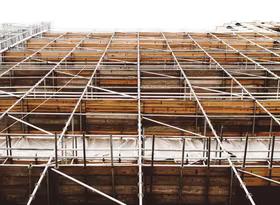What to watch when planning for the economic downturn
The latest Infometrics forecasts reinforce that New Zealand is expected to experience a period of softer growth over the next few years. With many businesses and boards currently reviewing their strategic plans and priorities for the coming years we thought it useful to briefly highlight some of the key current economic insights that decision makers need to be aware of. We also highlight areas where Infometrics can provide additional expertise to help businesses and boards make informed decisions as part of our regular series of presentations to organisations across New Zealand.
Watch out for another cut to the official cash rate (OCR) in November this year. We’re expecting at least a 25bp cut at this stage, but there’s an outside chance that the Monetary Policy Committee opts for another confidence-shattering 50bp cut. We’re also expecting another cut in February next year if the economy doesn’t improve materially (and we don’t expect it will).
Graph 1

In our economic presentations we provide a blunt assessment about why we don’t think the Reserve Bank will change from their gloomy (but likely correct) economic assessment. We also provide reasons why we don’t think further OCR cuts will do a whole lot to boost flagging investment (outside of housing, see Graph 1). As always, we wrap up with an assessment of what this all means for your business.
With interest rates heading lower, no capital gains tax to spook investors, and easier deposit requirements for first home buyers, it’s a sunny time for property purchases. Add to these factors the looser loan-to-value ratio (LVR) restrictions introduced at the start of 2019, and our expectation for even further loosening from 2020, and all the conditions are present for a housing revival.
In our presentations we can outline what the housing and broader construction market is doing across regional New Zealand and where future pinch points are likely to be. We also look at why capacity pressures in the construction industry are here to stay and why this is likely to result in cost blowouts, particularly in Auckland and Wellington.
The economy is certainly slowing in New Zealand, with data indicating that it won’t get any better over the next six months. A contracting manufacturing sector, low business sentiment, below average consumer confidence, and softer employment growth all point towards further softening in New Zealand’s output growth.
We’re picking the future to be slightly brighter in 2021, with a rebound in the housing market and greater government stimulus putting the economy on a stronger path.
Our economic presentations discuss whether the whether the slightly brighter outlook in 2021 is a real rebound or a dead cat bounce. Will a sugar-hit from the government finally get more capital spending underway? Or will the sugar-hit be short-lived and simply result in the economy getting a sore stomach?
The government continues to have too much cash and too few projects (see Graph 2). Current government projects are slow to get off the ground, with KiwiBuild, the Provincial Growth Fund, and transport funding generally taking a long time to ramp up. More funding for key services, like education and health, is already factored in with spending across the new few years also taking time to wind up.
Graph 2

Our economic presentations discuss the types of fiscal spending that will achieve the biggest bang for the buck in the short-term. As we have mentioned previously, while increased infrastructure spending is theoretically a good idea, a lack of shovel-ready projects mean it won’t result in the injection the economy needs. We can also look at how long we can realistically expect increased fiscal spending to occur.
Expectations for global growth continue to trend lower, with growth for the 2019 year expected to slow to 2.6%pa according to Consensus forecasts (see Graph 3). There are signs that the US and China might have finally begun mending ties and bringing about an end to the trade war. But given we’ve been down this path before without resolution, we’re not holding our breath this time. Even if the trade war were to end tomorrow, the changed dynamics of the global trade system will take time to readjust, as the shocks from softer growth and firms planning for a downturn continue to reverberate through the system.
Graph 3

In our tailored presentations we outline what the global outlook means for your business and why New Zealand broadly is well positioned to ride out the trade war better than most.
This analysis outlines just a few areas that the Infometrics team can touch on in their economic presentations. In developing presentations, we work with clients before the presentation to ensure that we understand their business and what areas to focus our insights on. If you’d like to organise a presentation from one of the Infometrics team, get in touch here.








